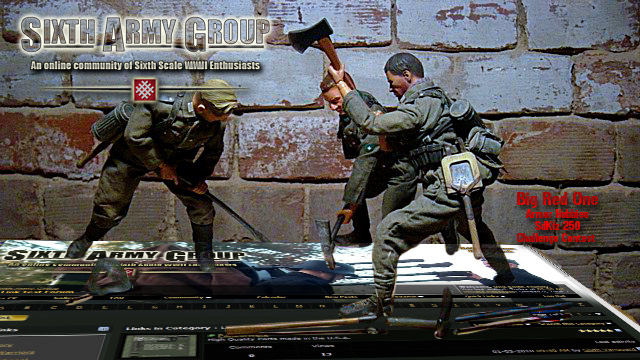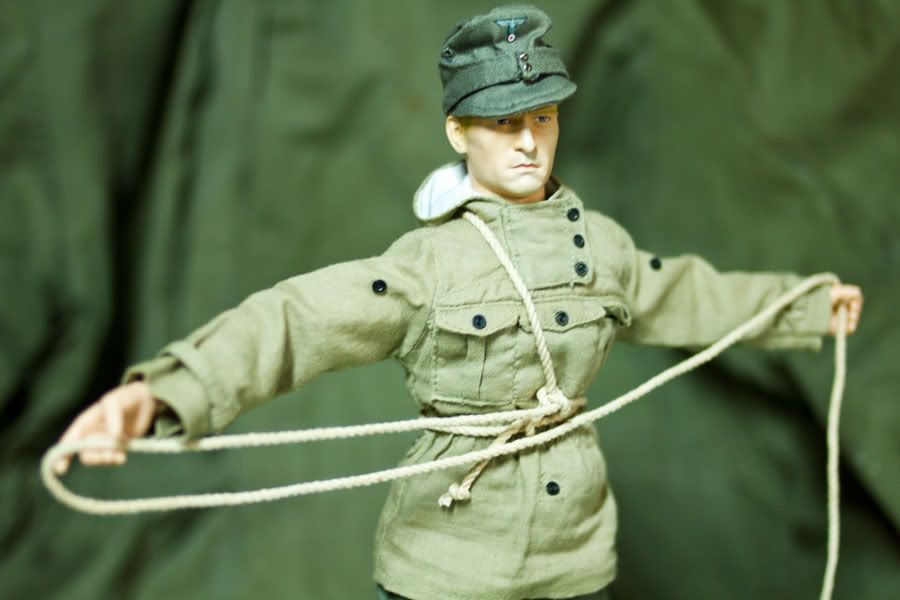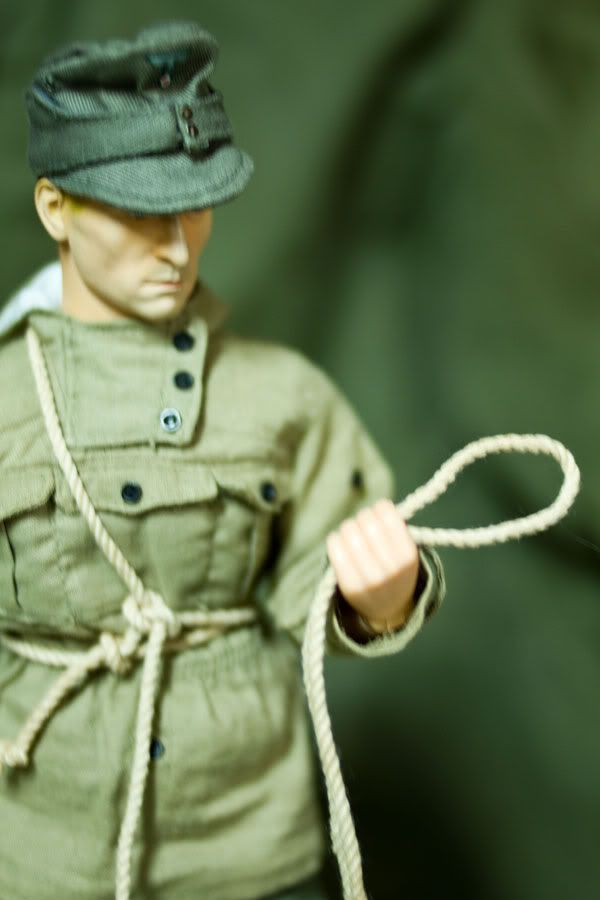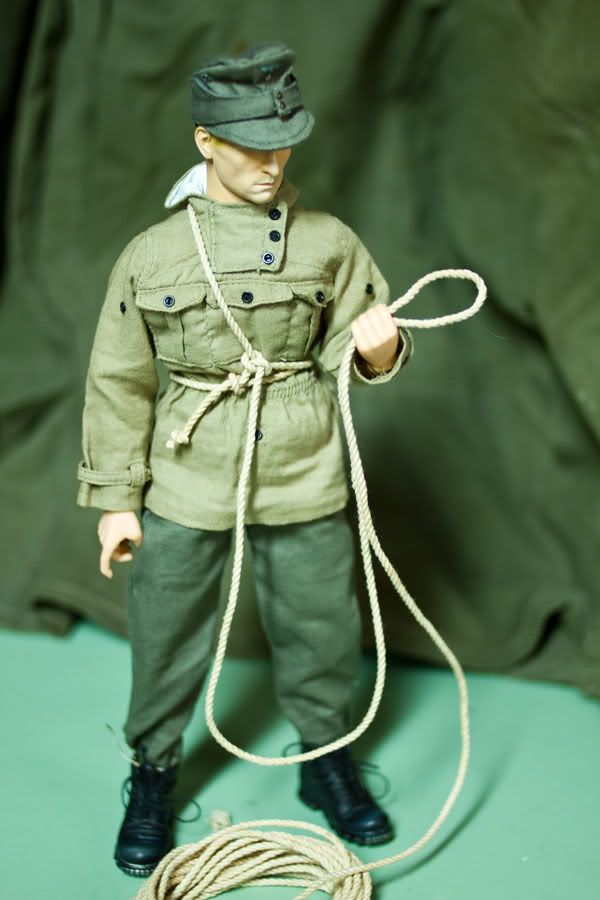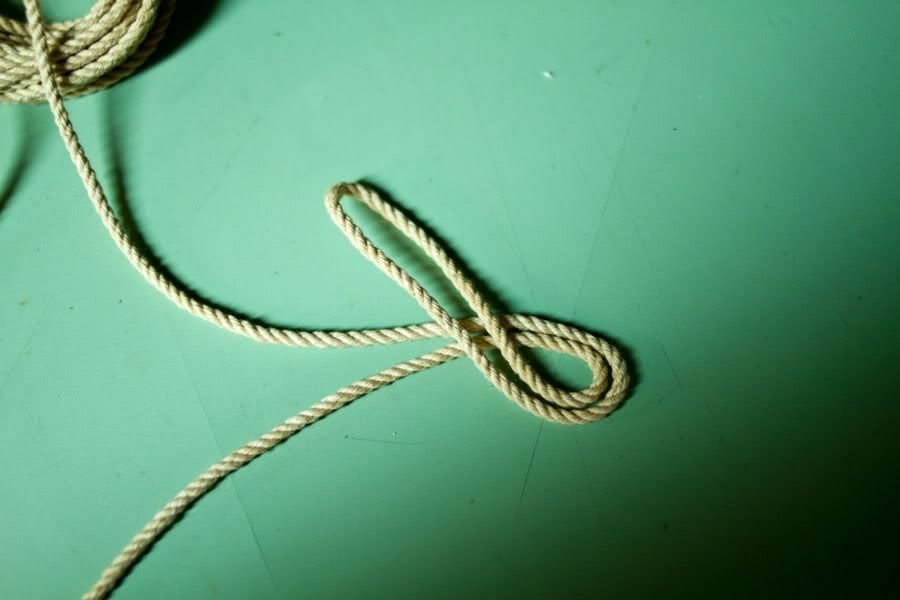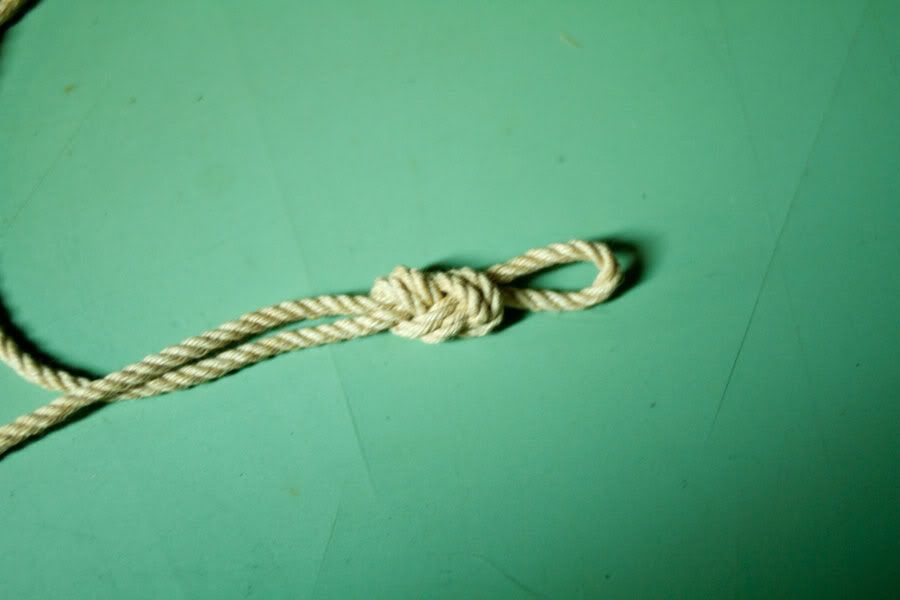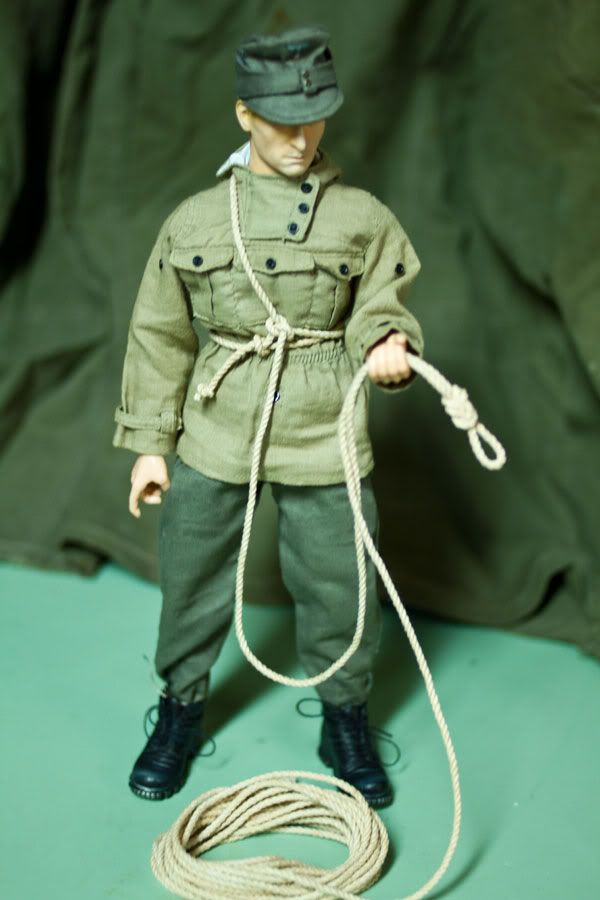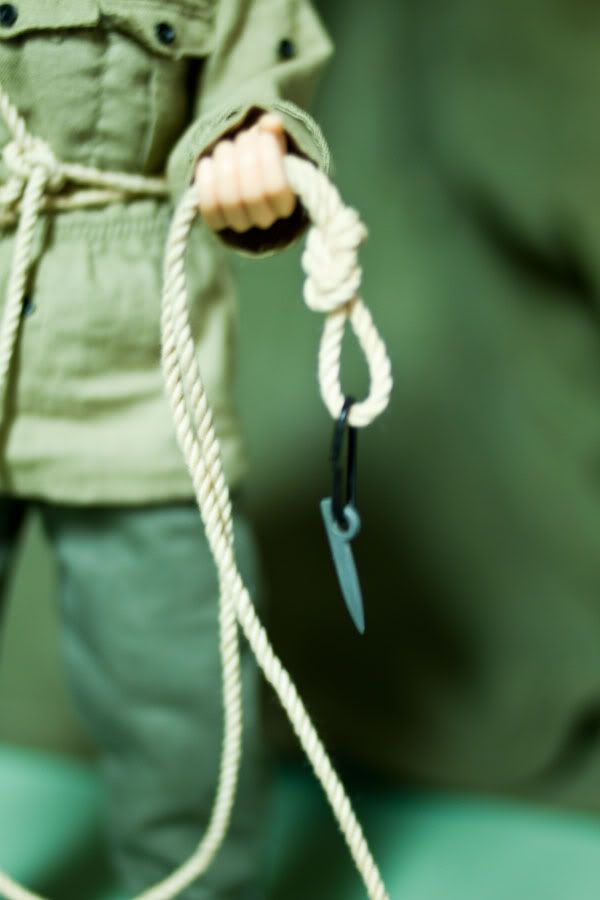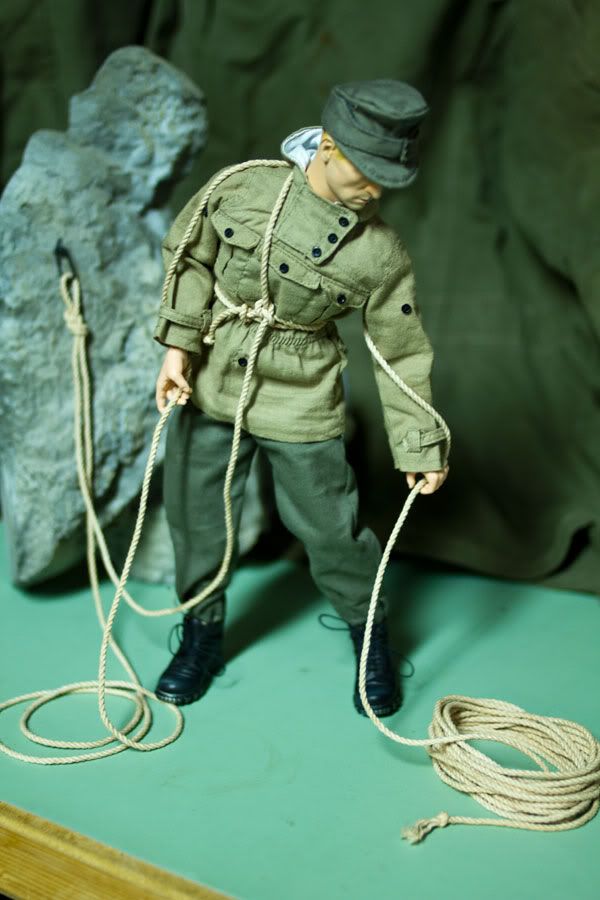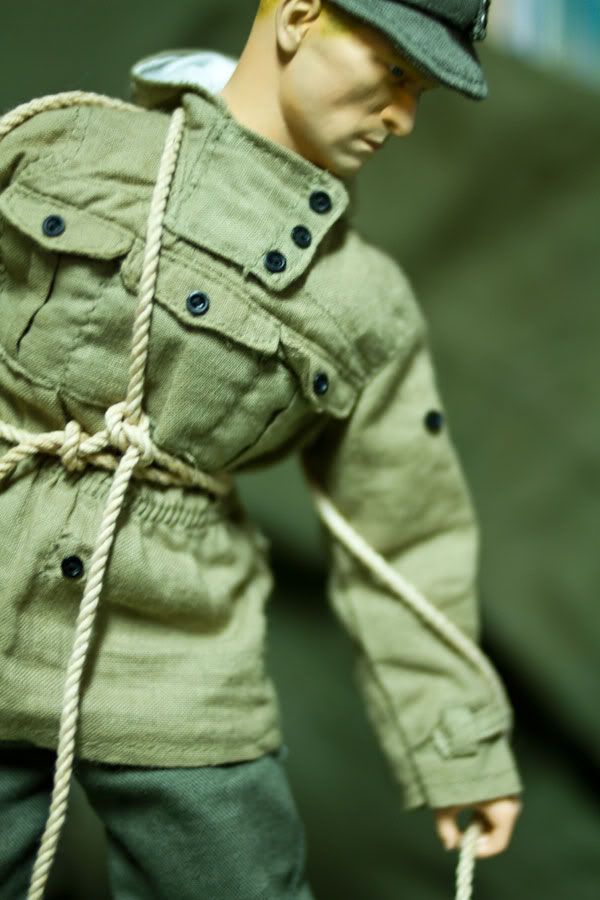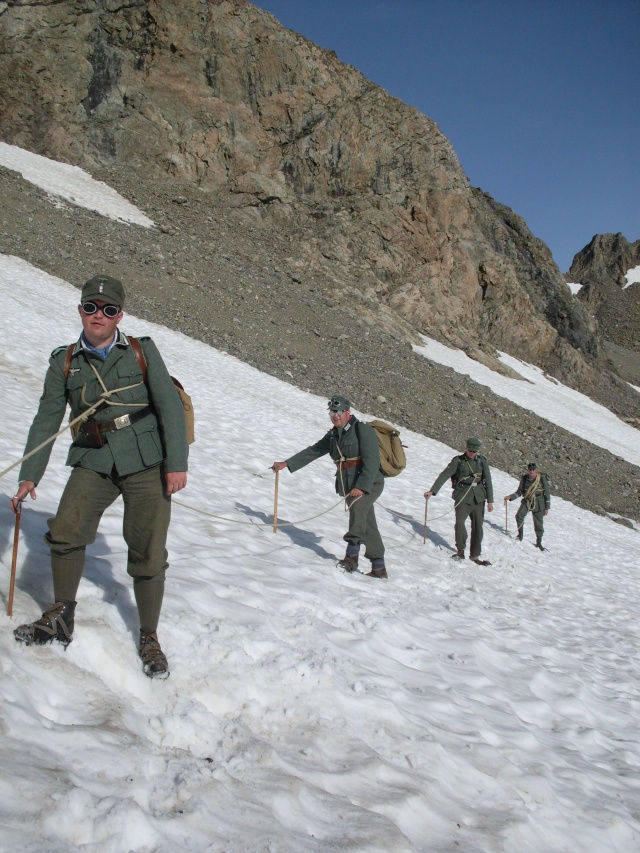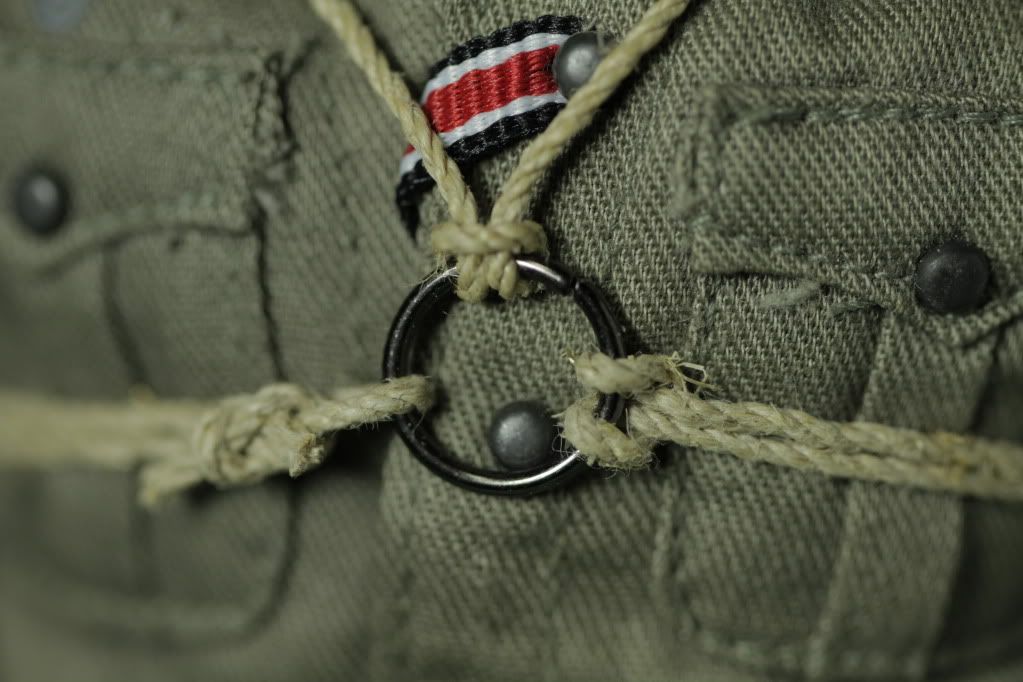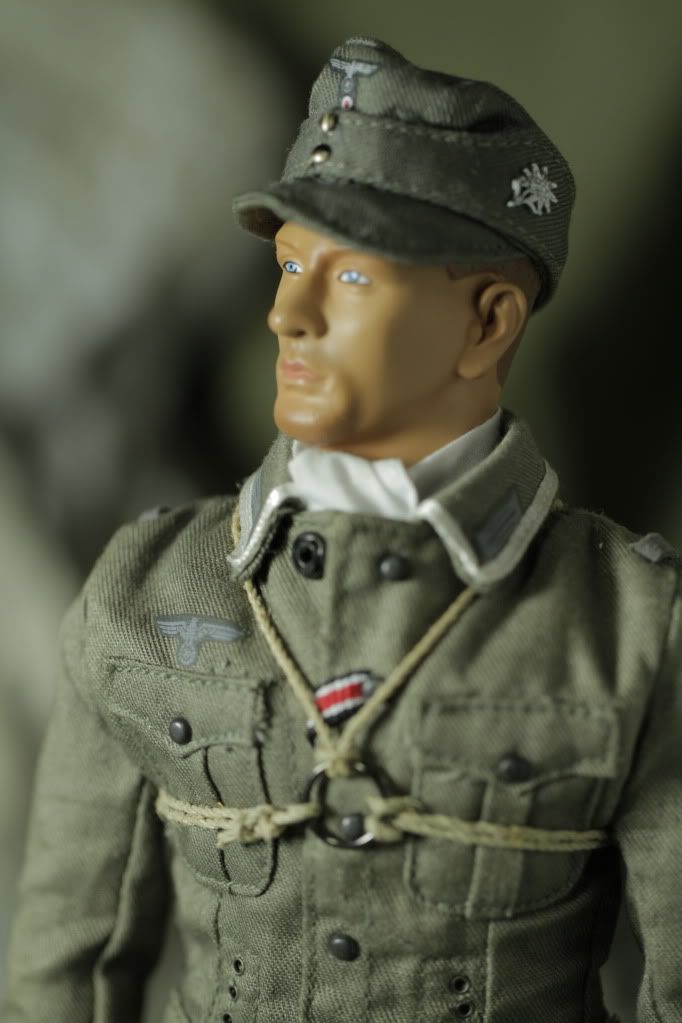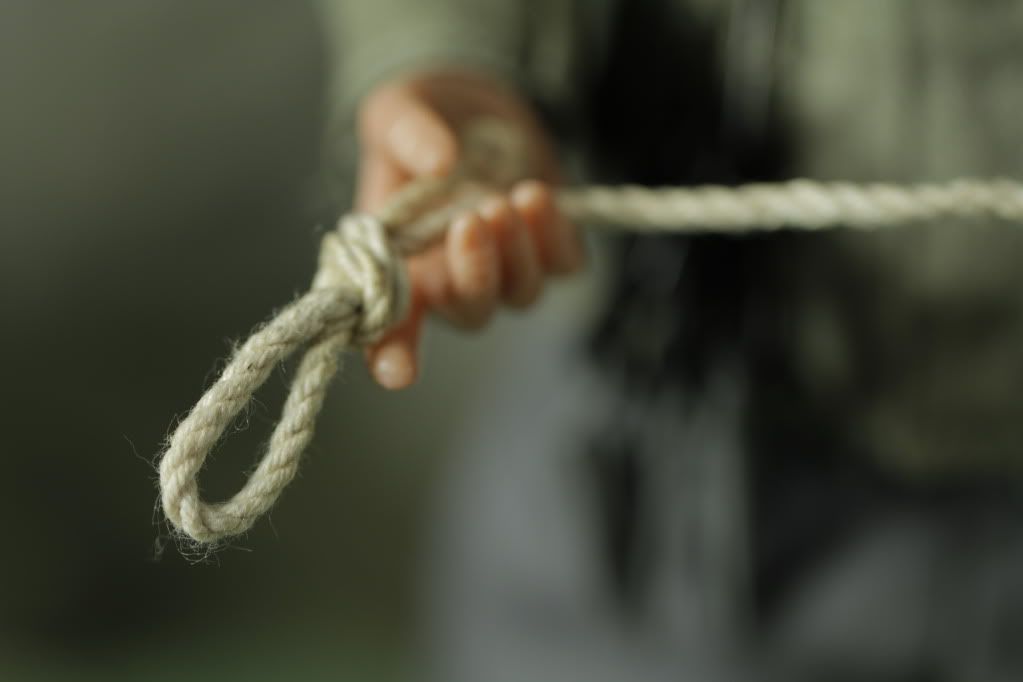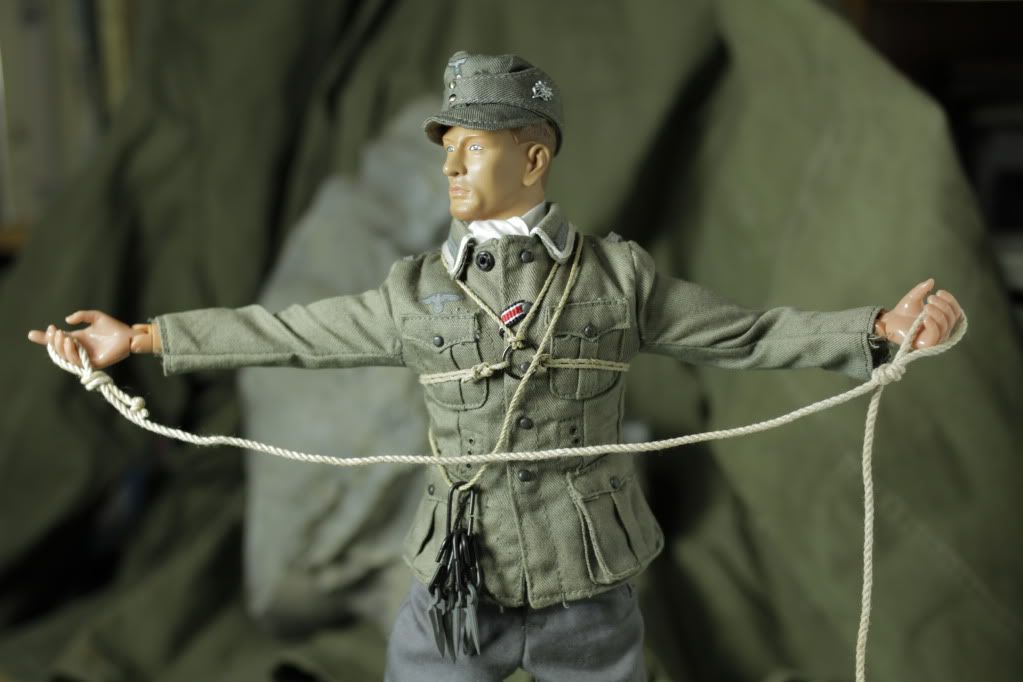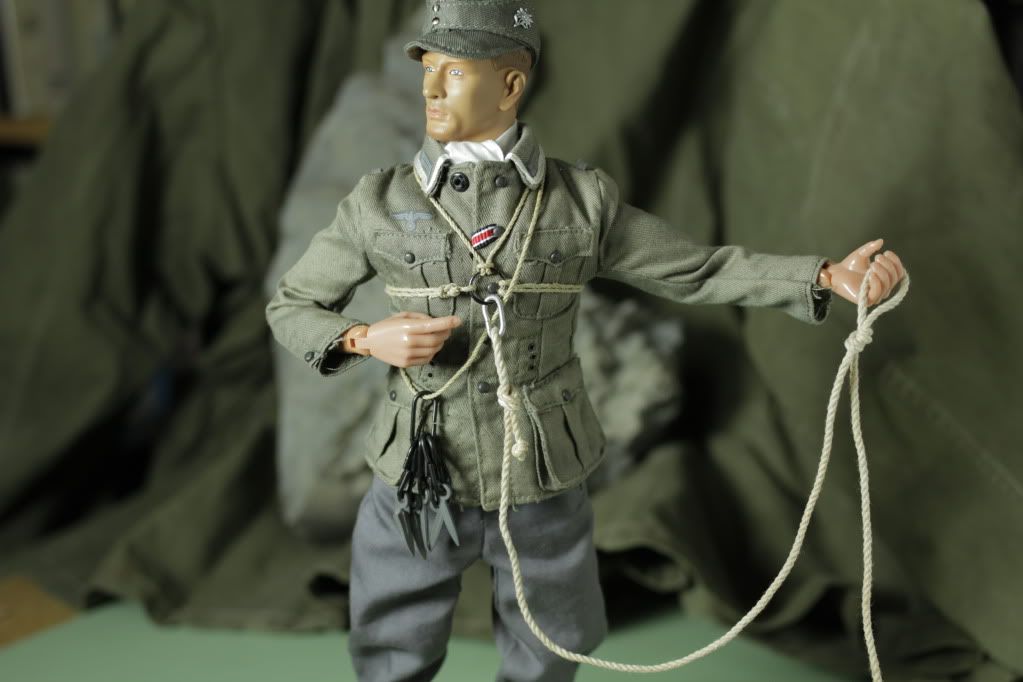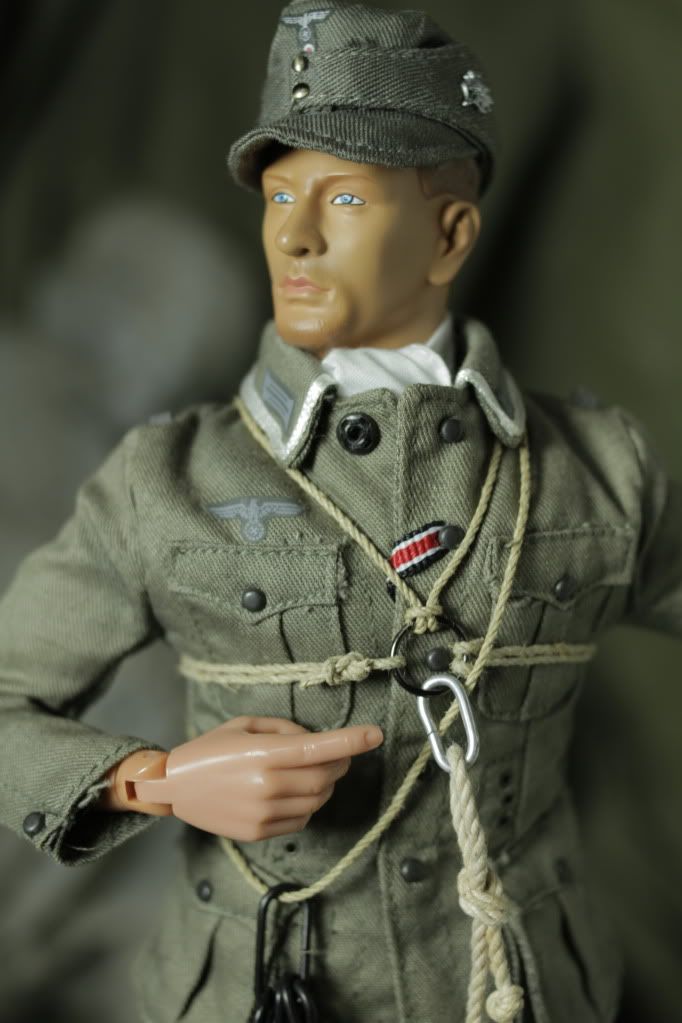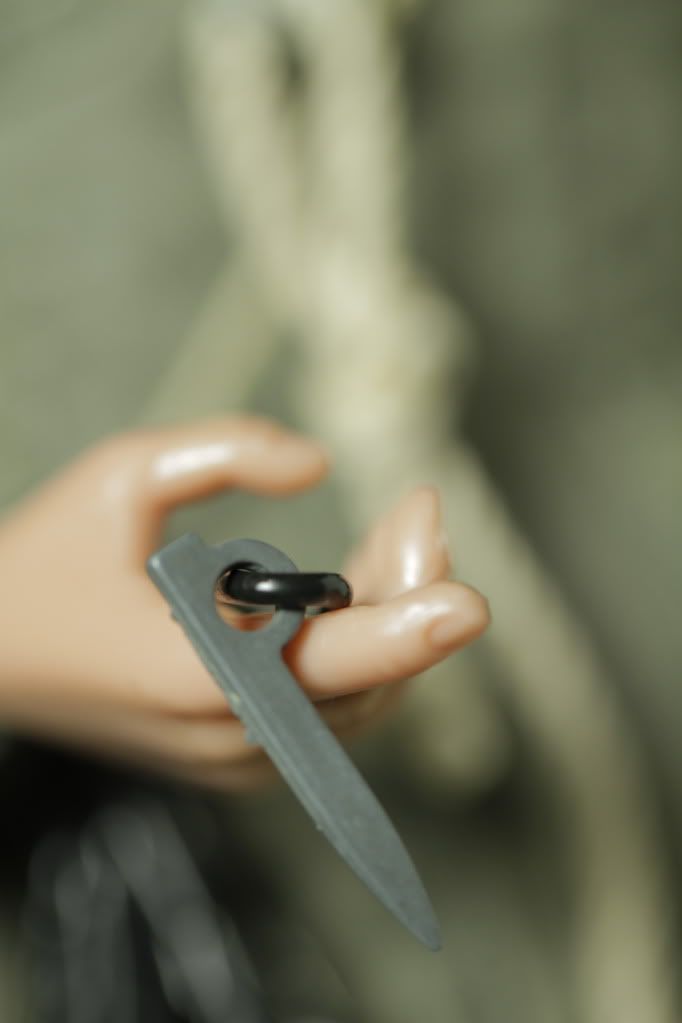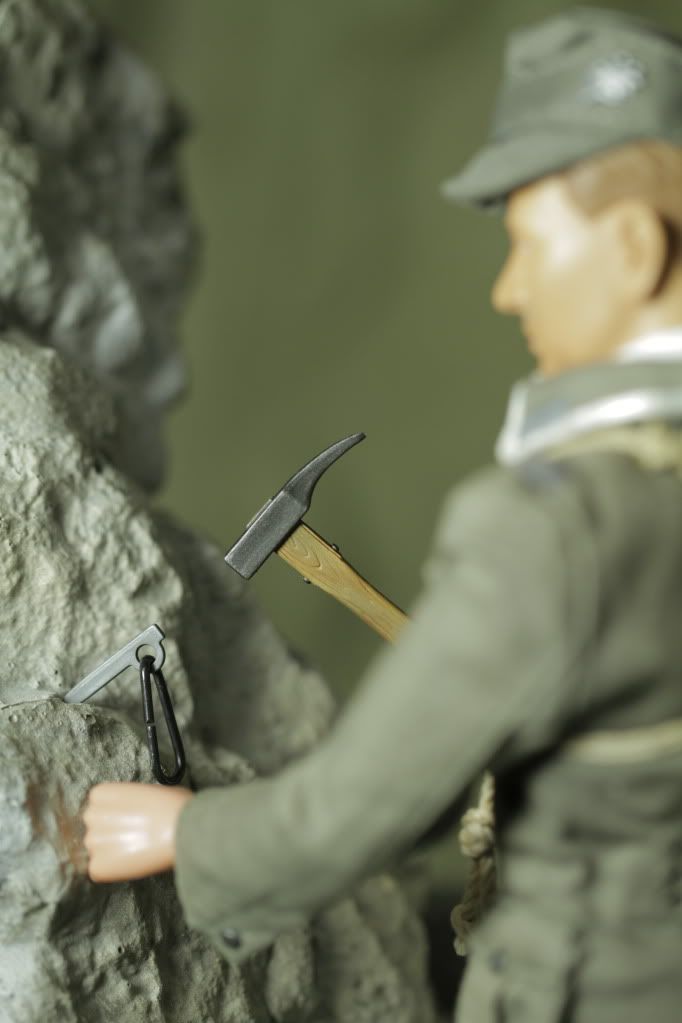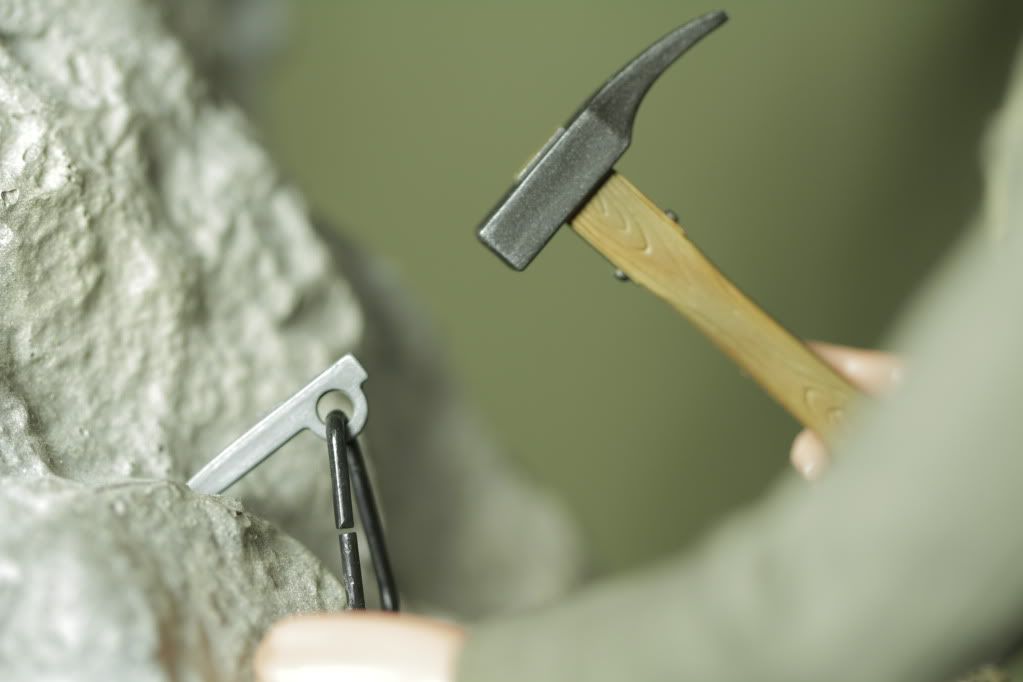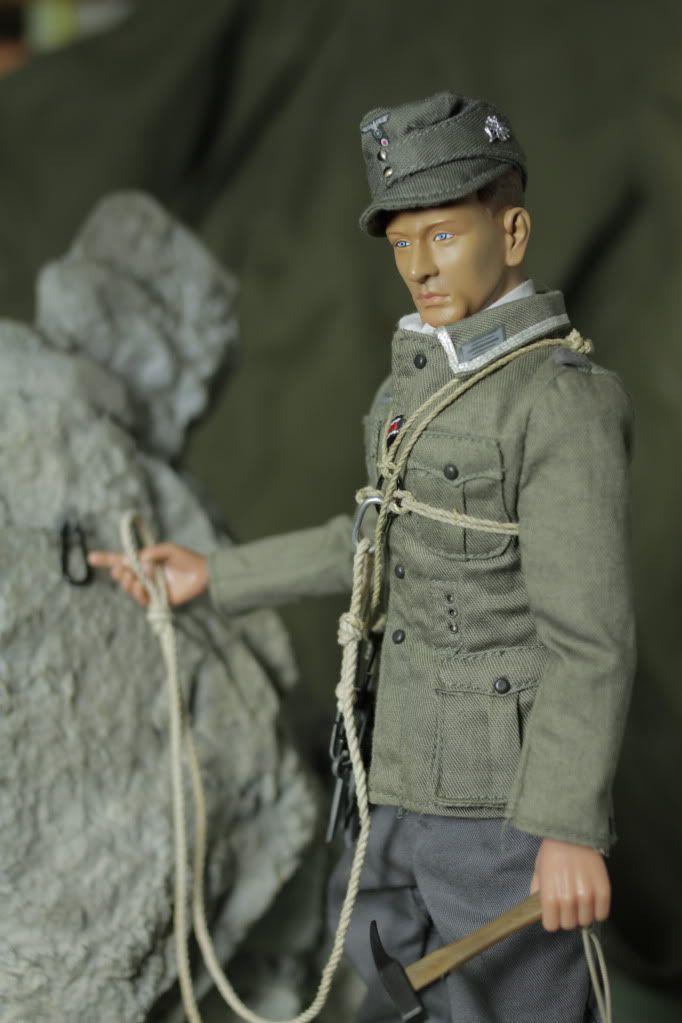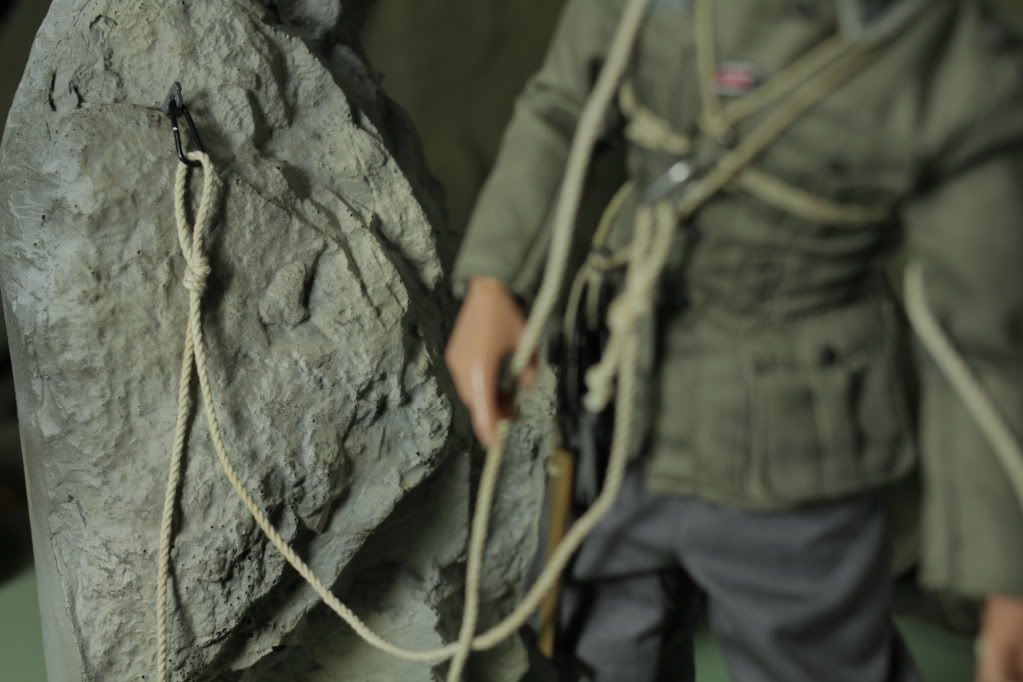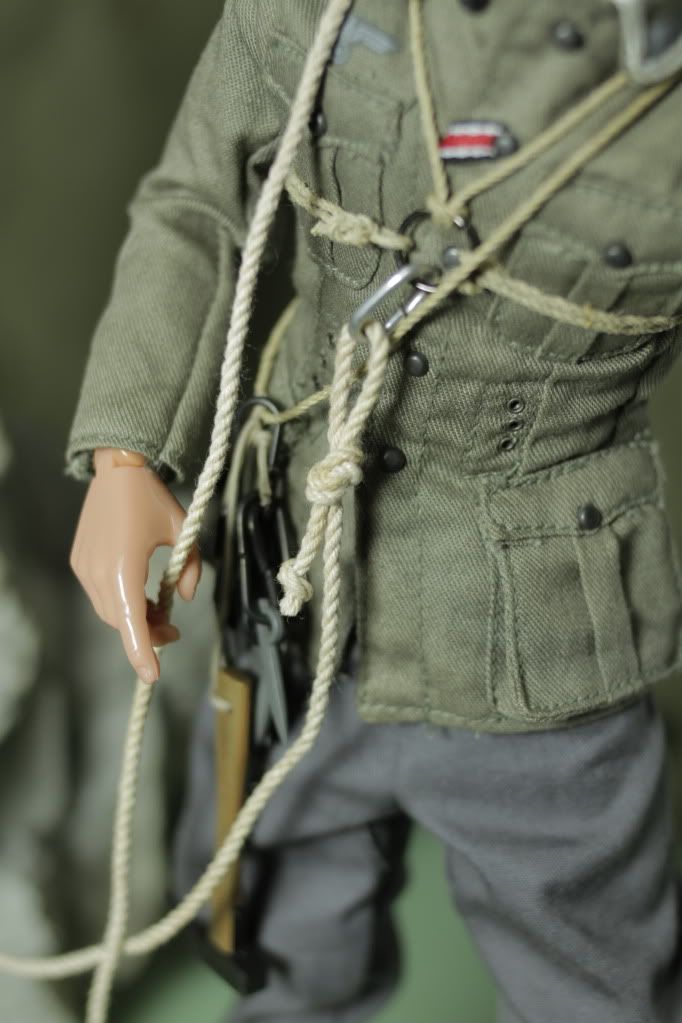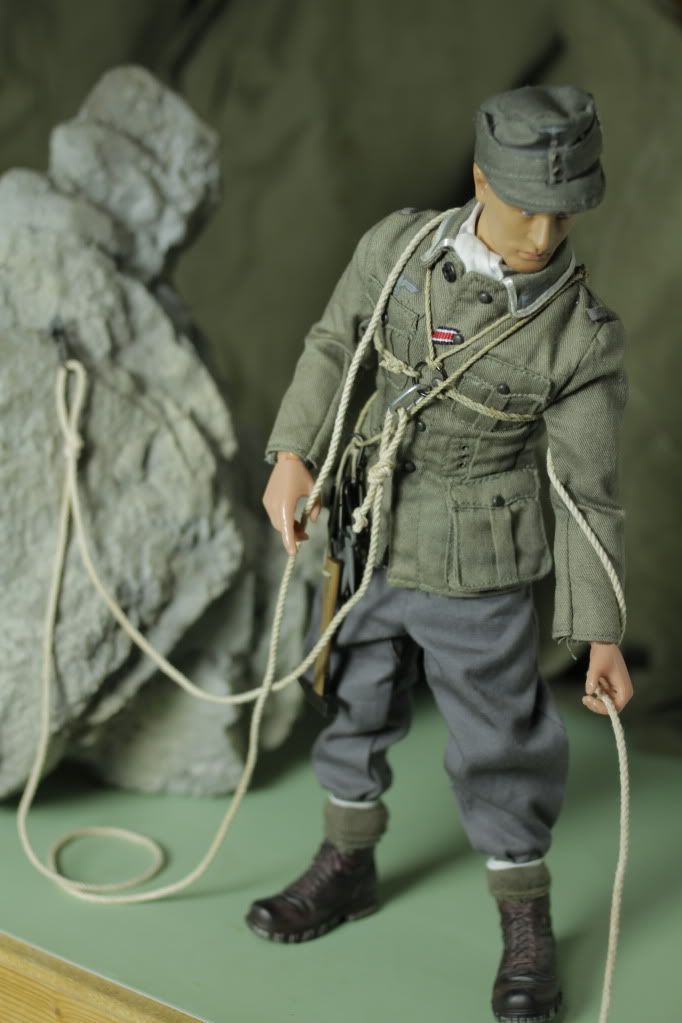Heeresbergführer
Company Commander
Servus Bergkameraden,
There have been many great mountain troop figures posted on this and other forums. And, of course, the best way to display a mountain trooper is in his element...the mountains.

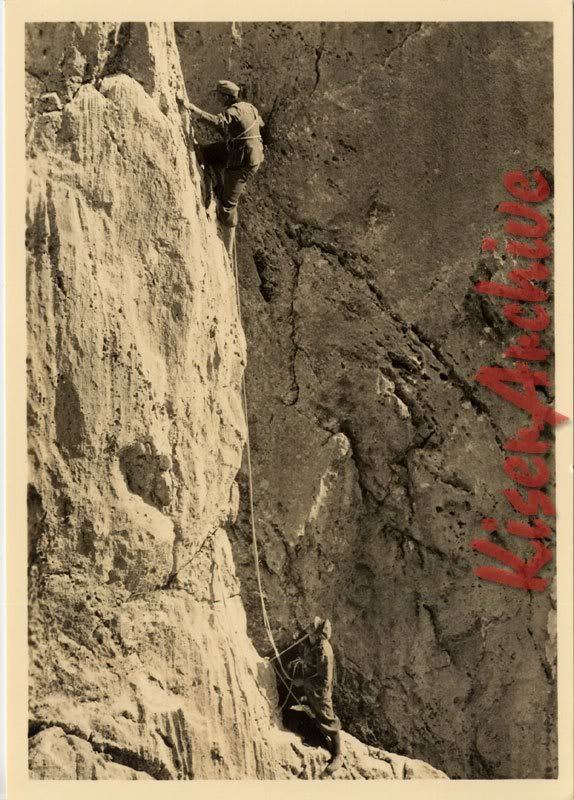
But unless you have some experience with rock climbing or mountaineering, trying to pose a figure with proper ropes, knots, and equipment can be daunting...and if not done correctly, you might end up with a figure tied up in bondage!

In this tutorial, we'll start off with a standard way of tying into a rope for rock climbing used by the German Gebirgsjägers...though this is a fairly standard technique used in mountaineering until the 1950's. This can be used with a 2-man roped climbing team...climbing vertical rock, or by a 3-man roped team when crossing snow fields and glaciers. This is called a "Jägerknoten mit Schulterschlinge" (bowline knot with shoulder sling).
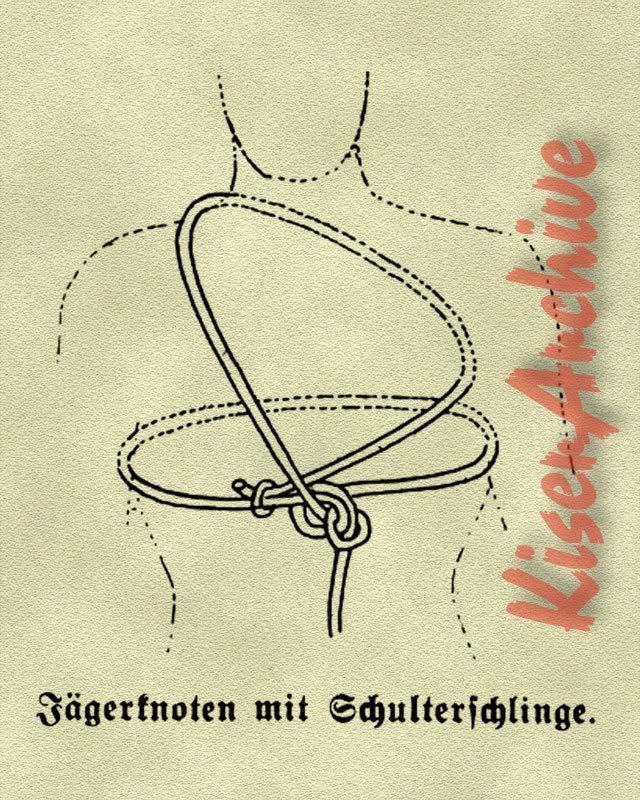

The double Jägerknoten is used to tie into the middle of the rope when used for a 3-man team.
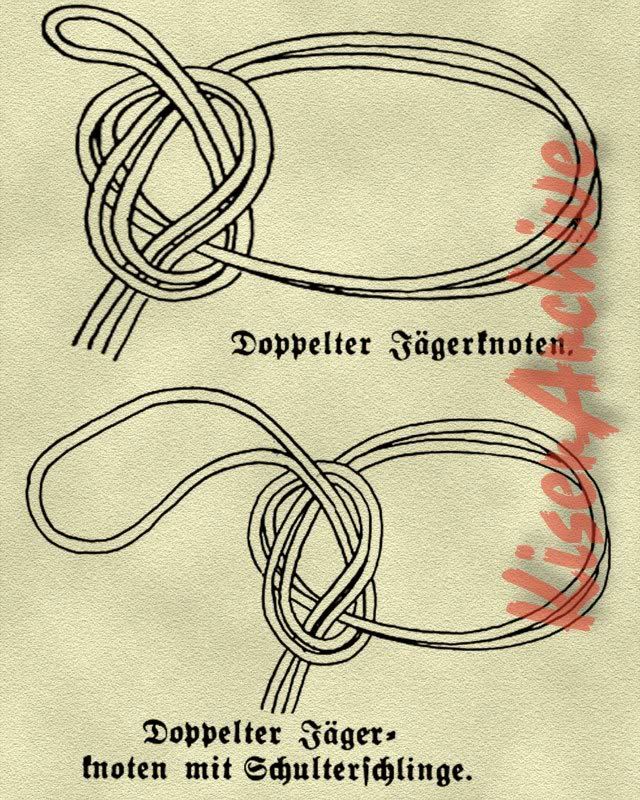
For 1/6th scale climbing rope, I have found that twisted cotton string dyed in tea makes the best. A standard period climbing rope was 10-12mm in diameter and 30-40 meters in length.


Now let's try this in 1/6th scale...first take your scale rope and draw out two arm span lengths that will be needed to make the "Jägerknoten mit Schulterschlinge."

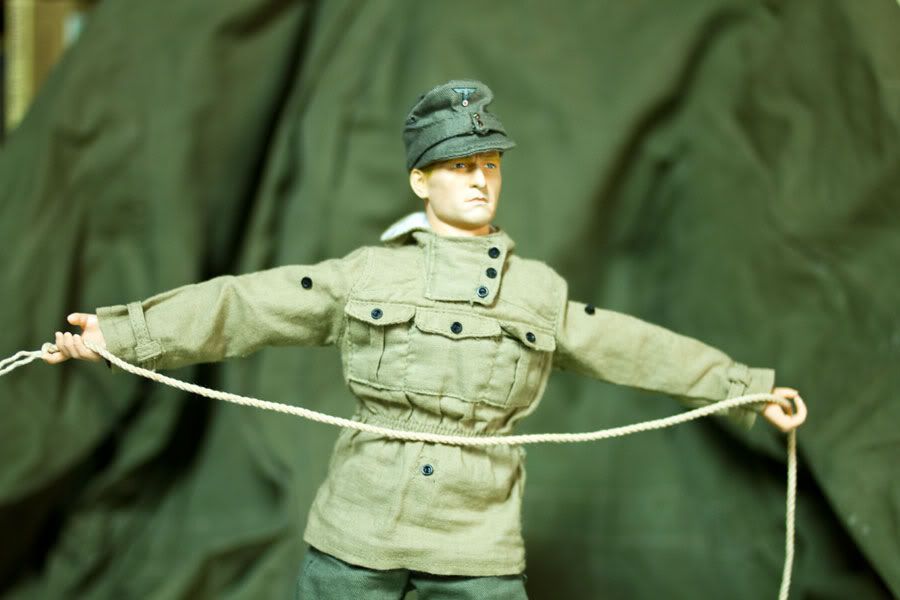
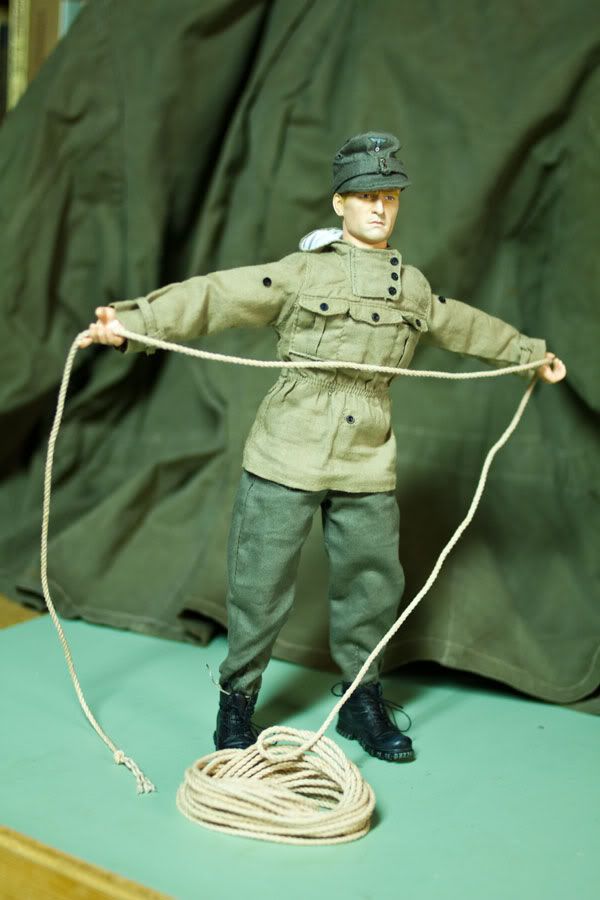
Take the rope and bring it around the figure's waist.


To tie the "Jägerknoten," first make a loop on the portion of the rope that goes to the main bulk of the climbing rope.
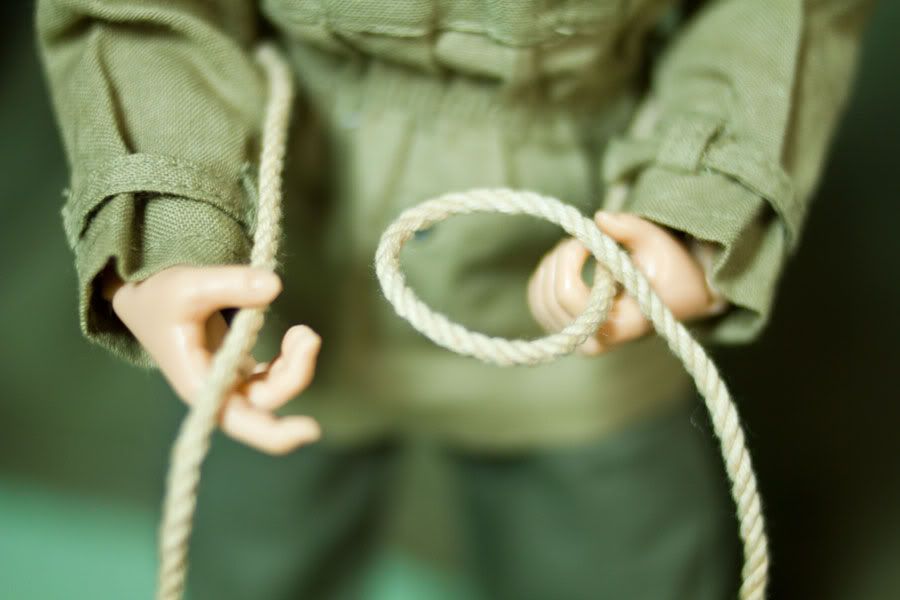
Now take the end of the rope...the rabbit...and bring it out hole, around the tree, and back through the hole...old boy scout trick to remember how to tie this!
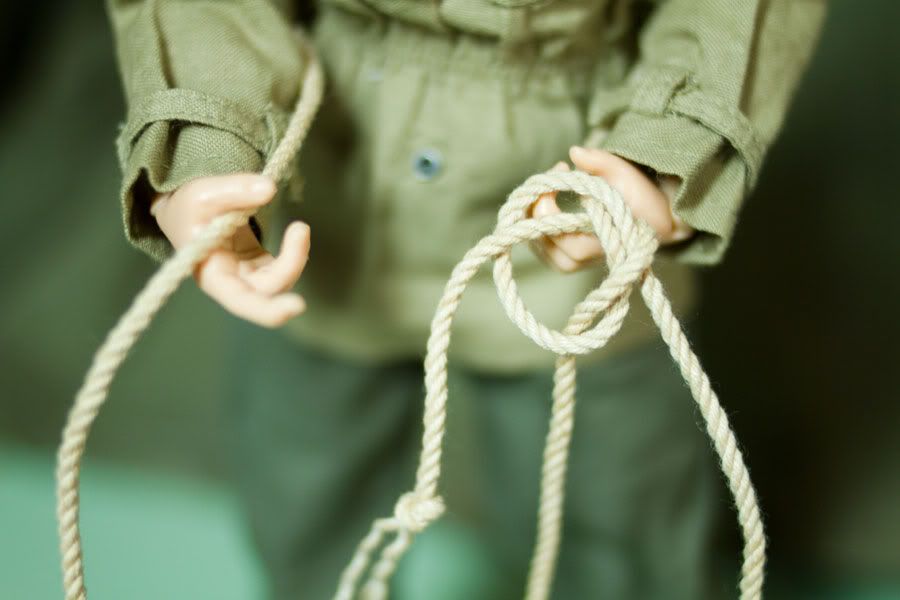
Tighten up the knot around the waist.
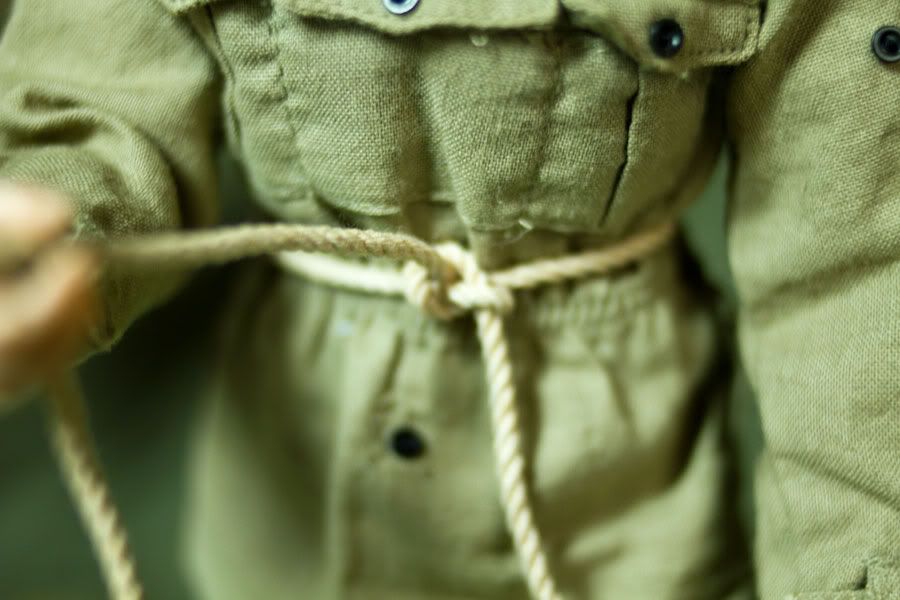
Gather up the loose end of the rope.
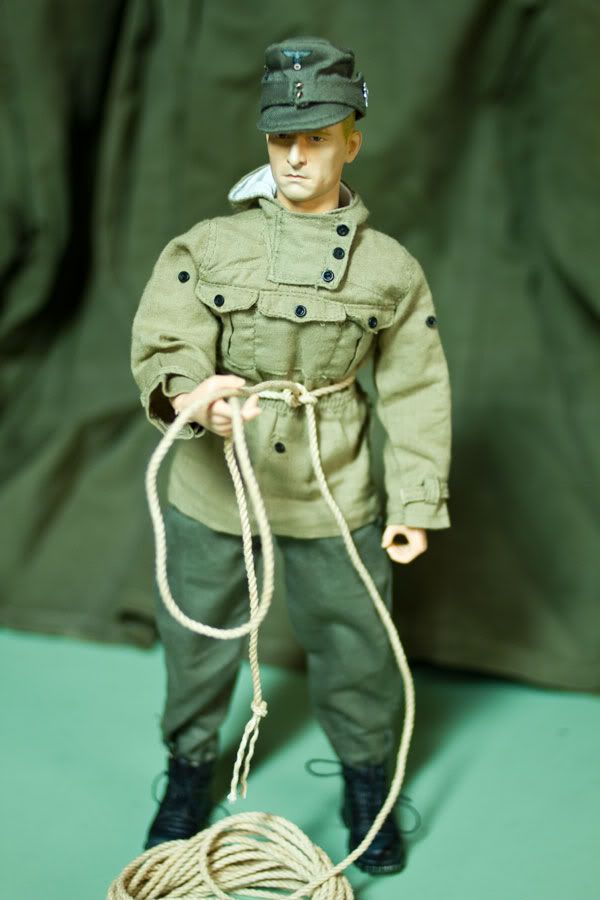
Bring the end of the rope over the right shoulder...
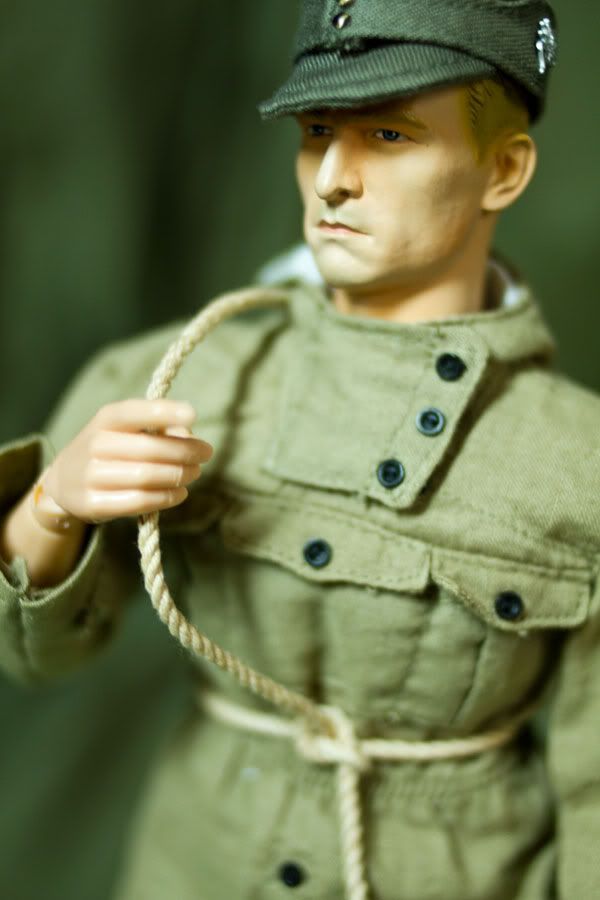
and under the left arm.
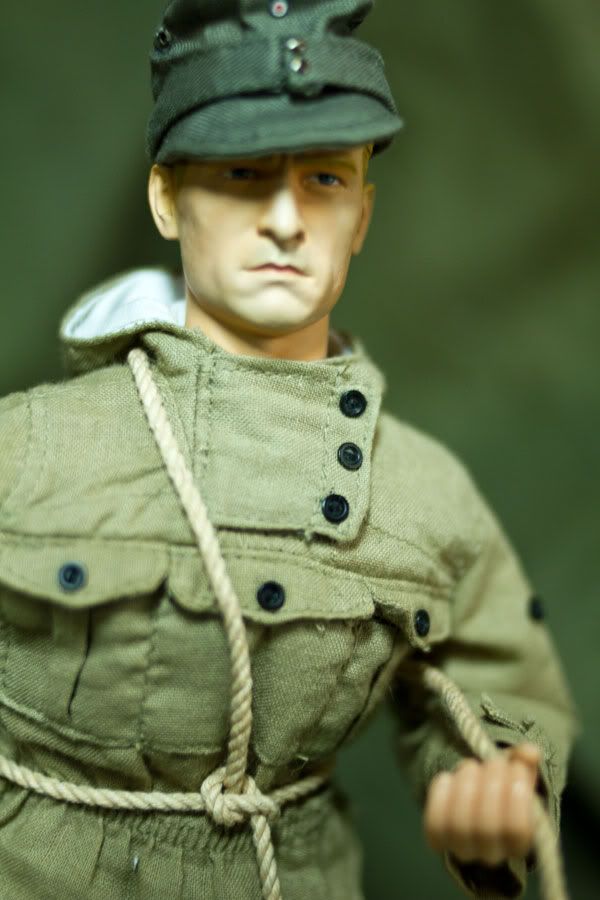
View of the back.
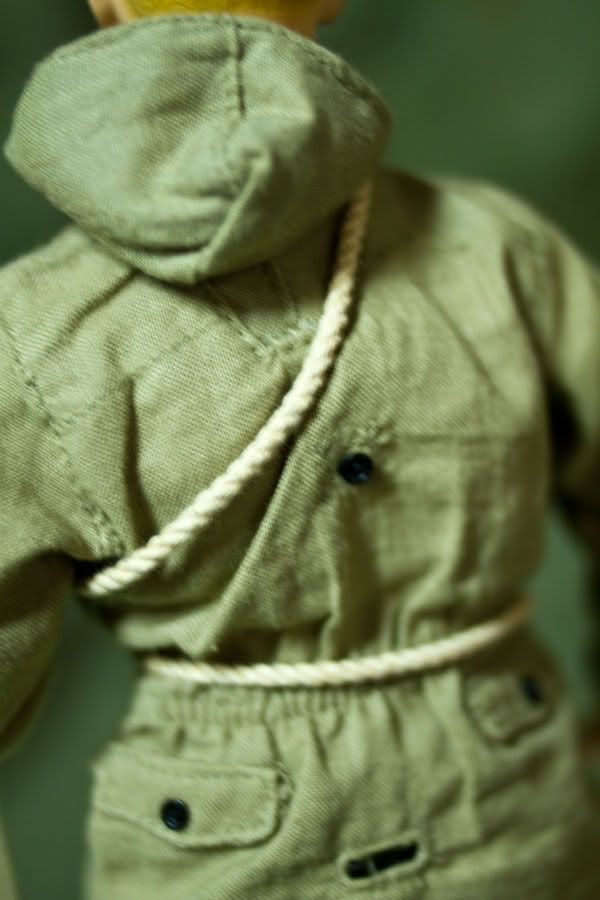
Slide the end of the rope under the shoulder sling...
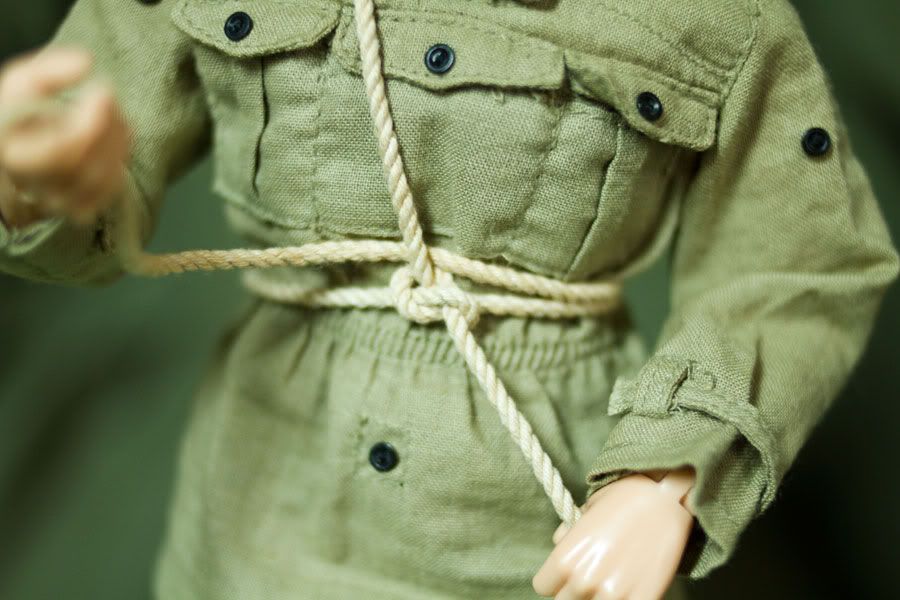
and tie off the end of the rope. This completes the "Jägerknoten mit Schulterschlinge." Now your Gebirgsjäger is ready to..."climb every mountain, follow every dream"...woops, dreaming of the Alps again!
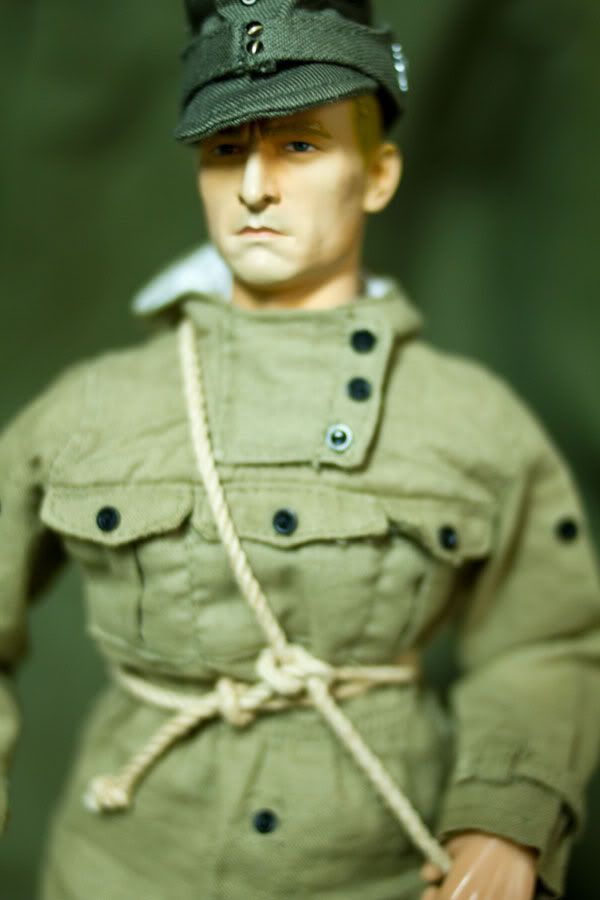
The next tutorial will show you how to set up a belay position.
Berg Heil und Horrido!
Patrick

There have been many great mountain troop figures posted on this and other forums. And, of course, the best way to display a mountain trooper is in his element...the mountains.


But unless you have some experience with rock climbing or mountaineering, trying to pose a figure with proper ropes, knots, and equipment can be daunting...and if not done correctly, you might end up with a figure tied up in bondage!

In this tutorial, we'll start off with a standard way of tying into a rope for rock climbing used by the German Gebirgsjägers...though this is a fairly standard technique used in mountaineering until the 1950's. This can be used with a 2-man roped climbing team...climbing vertical rock, or by a 3-man roped team when crossing snow fields and glaciers. This is called a "Jägerknoten mit Schulterschlinge" (bowline knot with shoulder sling).


The double Jägerknoten is used to tie into the middle of the rope when used for a 3-man team.

For 1/6th scale climbing rope, I have found that twisted cotton string dyed in tea makes the best. A standard period climbing rope was 10-12mm in diameter and 30-40 meters in length.


Now let's try this in 1/6th scale...first take your scale rope and draw out two arm span lengths that will be needed to make the "Jägerknoten mit Schulterschlinge."



Take the rope and bring it around the figure's waist.


To tie the "Jägerknoten," first make a loop on the portion of the rope that goes to the main bulk of the climbing rope.

Now take the end of the rope...the rabbit...and bring it out hole, around the tree, and back through the hole...old boy scout trick to remember how to tie this!


Tighten up the knot around the waist.

Gather up the loose end of the rope.

Bring the end of the rope over the right shoulder...

and under the left arm.

View of the back.

Slide the end of the rope under the shoulder sling...

and tie off the end of the rope. This completes the "Jägerknoten mit Schulterschlinge." Now your Gebirgsjäger is ready to..."climb every mountain, follow every dream"...woops, dreaming of the Alps again!

The next tutorial will show you how to set up a belay position.
Berg Heil und Horrido!
Patrick

Last edited:
